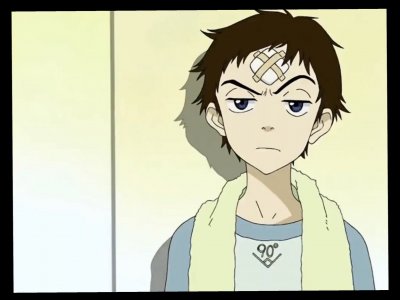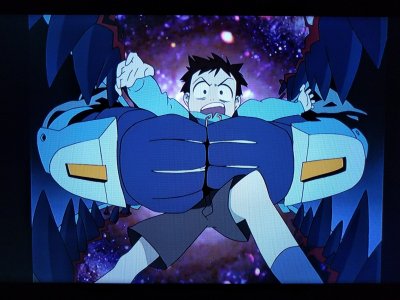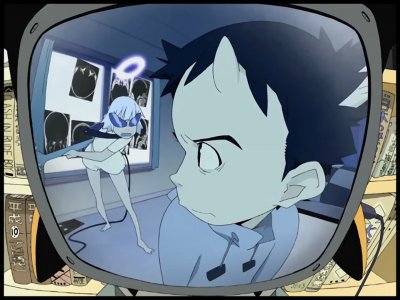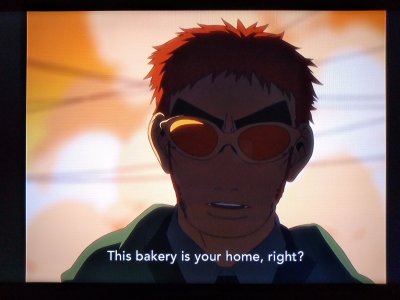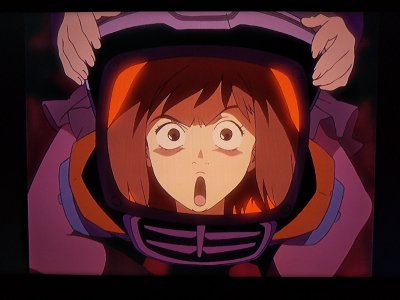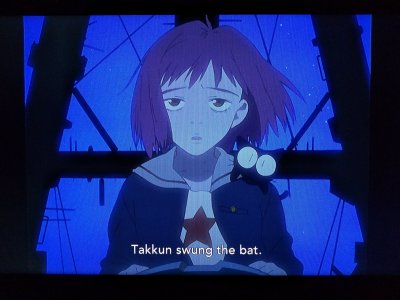Question: what connects mysterious fighting robots, a semi-autonomous Vespa, curry bread, Puss in Boots, a Gibson EB-0 bass guitar and a transdimensional portal hidden under a bandaid?
The answer, of course, is FLCL!
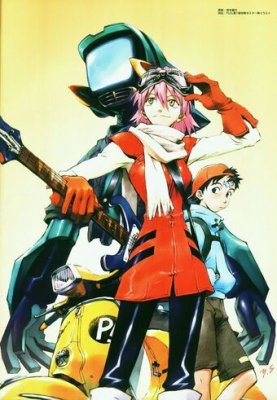
FLCL's main cast: (from right to left) Naota, Haruko and Canti
FLCL (known as Fooly Cooly by its true fans) is a six-episode OVA series by Gainax. Released in 2000, it was created and directed by Kazuya Tsurumaki, who previously worked on some other key titles for the studio.
It would be 18 full years later and with a change of production companies that fans finally saw a sequel, and, in typically eccentric FLCL fashion, it was actually a pair of sequels that they saw. Rather than your typical single cour, FLCLs Progressive and Alternative are two entirely separate entities, each being six episodes long in the spirit of the original. Both series are penned by playwright Hideto Iwai and are very different from each other. How different? You'll just have to wait and see!
This simulwatch will take in all 18 episodes at the traditional pace of one a day. Gaps can be built into the schedule between the individual series to allow for catching up, and we'll figure that out as we go, as we always do.
Here's the breakdown:
FLCL: 6 episodes, 1st–6th June
Progressive: 6 episodes, 7th–12th June
Alternative: 6 episodes, 13th–18 June
Dates can be adjusted as we watch, and the current episode for any day will be shown in this thread's title.
FLCL is widely available on Blu-ray and DVD from UK distributor MVM Entertainment, including through their own online store:
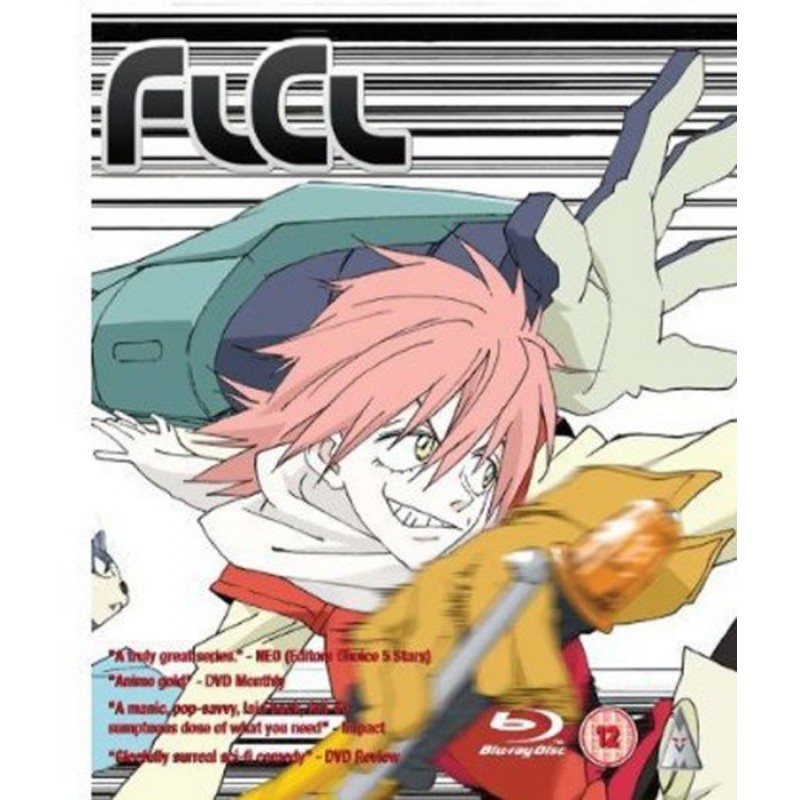
 www.anime-on-line.com
www.anime-on-line.com
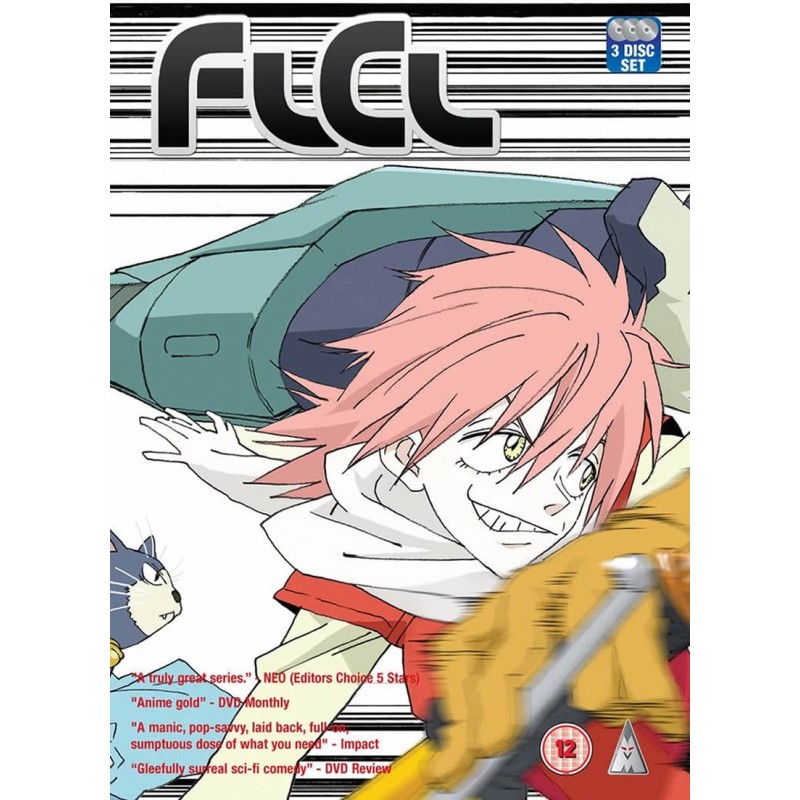
 www.anime-on-line.com
www.anime-on-line.com
Progressive and Alternative are both available to stream on Crunchyroll:
The answer, of course, is FLCL!

FLCL's main cast: (from right to left) Naota, Haruko and Canti
FLCL (known as Fooly Cooly by its true fans) is a six-episode OVA series by Gainax. Released in 2000, it was created and directed by Kazuya Tsurumaki, who previously worked on some other key titles for the studio.
It would be 18 full years later and with a change of production companies that fans finally saw a sequel, and, in typically eccentric FLCL fashion, it was actually a pair of sequels that they saw. Rather than your typical single cour, FLCLs Progressive and Alternative are two entirely separate entities, each being six episodes long in the spirit of the original. Both series are penned by playwright Hideto Iwai and are very different from each other. How different? You'll just have to wait and see!
This simulwatch will take in all 18 episodes at the traditional pace of one a day. Gaps can be built into the schedule between the individual series to allow for catching up, and we'll figure that out as we go, as we always do.
Here's the breakdown:
FLCL: 6 episodes, 1st–6th June
Progressive: 6 episodes, 7th–12th June
Alternative: 6 episodes, 13th–18 June
Dates can be adjusted as we watch, and the current episode for any day will be shown in this thread's title.
FLCL is widely available on Blu-ray and DVD from UK distributor MVM Entertainment, including through their own online store:

FLCL Collection (12) Blu-Ray
Publisher: MVM Released: October 21st 2013 Classification: 12 Language: English, Japanese Subtitles: EnglishRunning Time: 180mins

FLCL Collection (12) DVD
Publisher: MVM Released: February 2nd 2009 Classification: 12 Language: English, Japanese Subtitles: EnglishRunning Time: 180mins
Progressive and Alternative are both available to stream on Crunchyroll:
Last edited:

